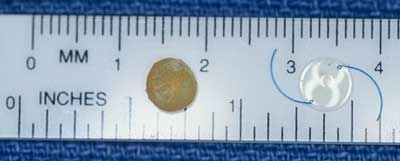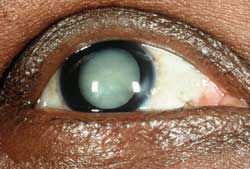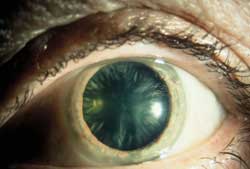
Cataracts and Surgery
What is a Cataract?
A cataract is a clouding of the normally clear lens of the eye. The lens is shaped like a flattened pea, and sits directly behind the pupil. At birth, the lens is normally crystal clear With time and age, it becomes cloudy and opaque. It is then called a cataract. The clouding of the lens begins to occur in virtually everyone after the age of 40, and it slowly becomes more cloudy with time. It usually does not significantly affect one’s vision until 60 years or older.
Examples of the lens of the eye every decade of life as it progresses into a cataract:
Upper left: clear lens of a 10 year old. Bottom right: cloudy, goldish- brown cataract of a 90 year old

Cataracts as seen through dilated pupils

When does a cataract need to be removed?
An age-related cataract rarely ever “has to come out.” Rather, the time to have cataract surgery is when the loss of vision caused by the cataract is affecting your ability to do the things you need to do or like to do (i.e. reading, driving, etc.) Only when the potential benefits of cataract surgery outweigh the risks of surgery is it time to proceed. The average age for cataract surgery is around 70.
How is cataract surgery performed?
Cataract surgery is an outpatient procedure done in one of the area hospitals under local anesthesia. Only one eye is done at a time, and it is best to allow the first eye to heal for at least several weeks prior to having the second eye done. An ultrasound probe is used to remove the cataract and it is replaced with a synthetic lens implant. The first few days after surgery, the vision is usually blurred. The vision typically improves each day thereafter and new glasses (if needed) are prescribed 4-6 weeks after surgery.

A whole cataract next to a lens implant.

